The benefits of using severe buckets out of Hardox 450
Severe buckets out of Hardox 450 offer a number of benefits for businesses, including: Increased durability and lifespan: Hardox 450 is a high-strength and wear-resistant steel
There are many different types of excavator buckets, each with its own specific purpose. Here are some of the most common types:
Digging bucket
This is the most common type of bucket, and it is used for general digging and loading. It has a curved, scoop-like shape that helps to gather material.
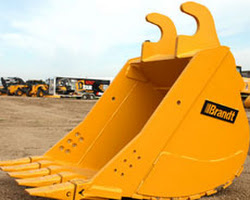
Image from www.brandt.ca
Rock bucket
This bucket is designed for breaking up and moving rocks. It has a reinforced lip and teeth that help to grip the rock.
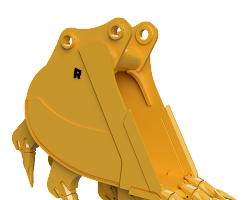
Image from www.rocklandmfg.com
Utility bucket
This bucket is designed to avoid hitting underground utilities. It has a smooth bottom and rounded edges that help to minimize damage to pipes and cables.
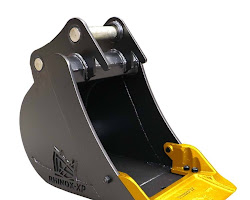
Image from www.rhinox-group.us
Grading bucket
This bucket is used for leveling and smoothing surfaces. It has a flat bottom and straight sides that help to distribute material evenly.
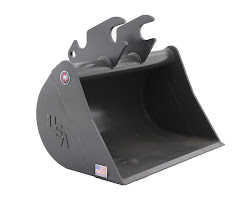
Image from www.spartanequipment.com
Trenching bucket
This bucket is used for digging trenches. It has a long, narrow shape that helps to cut through soil and other materials.
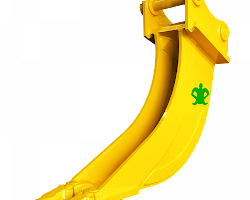
Image from www.eiengineering.com.au
Tilt bucket
This bucket can be tilted to one side, which makes it useful for loading and unloading materials from uneven surfaces.
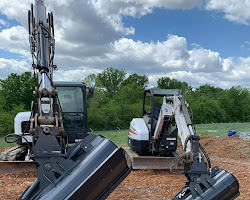
Image from www.lecinfo.com
V-bucket
This bucket has a V-shaped bottom that helps to gather material from the sides. It is often used for loading loose materials, such as sand or gravel.
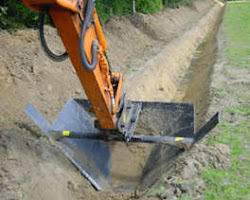
Image from www.digbits.co.uk
Frost bucket
This bucket has a serrated edge that helps to break up frozen ground. It is often used in cold climates.
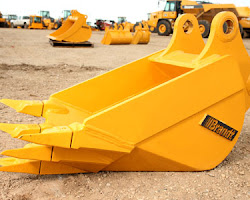
Image from www.brandt.ca
Micro trenching bucket
This bucket is used for creating small trenches for pipes or cables. It has a narrow width and a sharp edge that helps to minimize damage to surrounding soil.
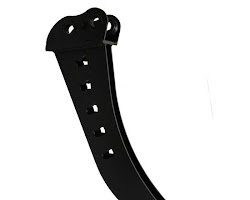
Image from www.rhinox-group.us
Skeleton bucket
This bucket has a skeleton-like construction, which makes it lightweight and easy to maneuver. It is often used for cleaning up debris or for light digging.
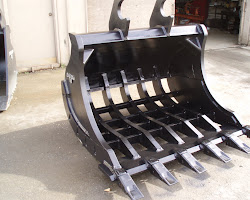
Image from www.daequip.com
Rake riddle bucket
This bucket has a rake-like bottom, which is ideal for collecting loose material such as sand or gravel. It is often used for cleaning up debris or for loading trucks.
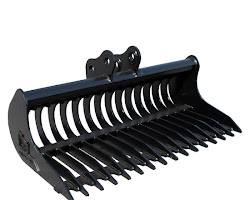
Image fromw www.rhinox-group.us
Clean-up bucket
This bucket is designed for cleaning up debris or for loading trucks. It has a flat bottom and sloping sides, and is often equipped with a teeth or spikes to help break up hard ground.
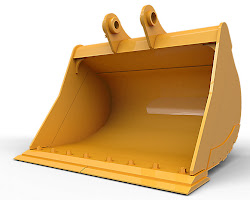
Image from www.cat.com
The type of bucket that you need will depend on the specific task that you are trying to accomplish. For example, if you are digging a trench, you will need a trenching bucket. If you are loading gravel, you will need a V-bucket. And if you are breaking up frozen ground, you will need a frost bucket.
When choosing an excavator bucket, it is important to consider the size and weight of the bucket, as well as the type of material that you will be working with. You should also make sure that the bucket is compatible with your excavator.

Severe buckets out of Hardox 450 offer a number of benefits for businesses, including: Increased durability and lifespan: Hardox 450 is a high-strength and wear-resistant steel
Severe buckets are designed to handle a variety of tough rock materials, including: Granite Shot rock Aggregate Coal Recycled concrete Other abrasive materials commonly encountered
Yes, it is true that severe duty buckets are more popular than heavy duty buckets and general purpose buckets. This is because severe duty buckets
The most popular steel plates for severe buckets are: Hardox 450 is a high-strength, wear-resistant steel that is ideal for severe-duty applications. It has a Brinell